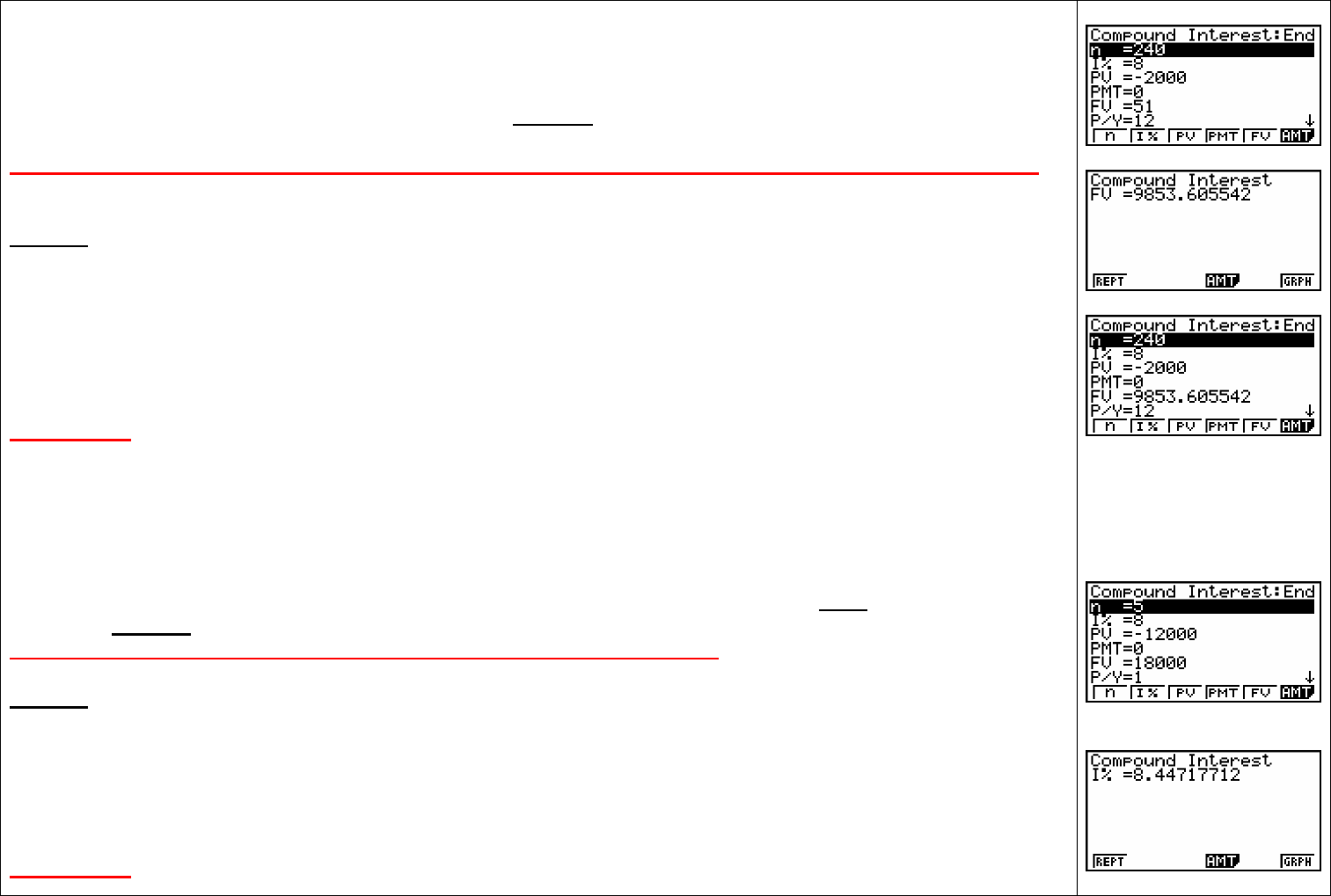
Casio 9860 Graphic Calculator Self – Guided Instructions TVM Mode © Richard Andrew / Stuart Palmer 2008 3
Below are two examples that involve a once-only investment that receives compound interest.
Example 1:
A sum of $2 000 is invested at 8%pa interest, compounded monthly,
for 20 years.
What is the future value of this investment?
Enter the values as they appear in the question, pressing EXE after each entry. Leave FV as the pre-existing value.
Check your entries with Fig2
NOTES:
n=20x12; is the number of months. A good habit for students to enter n as (eg 20x12) so as to minimize careless error.
I%=8; in TVM, the interest is always pa
PV is negative because $2000 'left' your pocket
PMT=0; there were no regular payments
FV CAN BE ANYTHING! It is what we want to know so it makes no difference what number is showing here.
P/Y and C/Y = 12; the interest compounds 12 times every year. P/Y and C/Y are always equal.
Now press F5 for FV (Future Value). See Fig3.
The answer can be read in the previous screen by pressing EXIT (Fig4)
Note that FV is positive, not negative, because after 20 years the investment goes 'back into your pocket'.
The investment has grown from $2000 to $9853.61
Example 2:
What annual interest rate will be required for an investment of $12 000 to become $18 000 in 5 years, if the interest
compounds annually?
Enter the values as they appear in the question, pressing EXE after each entry. Check your entries with Fig5.
NOTES:
n=5 (years)
I%=ANYTHING; It is what we want to know so it makes no difference what number is entered here.
PV is negative because $12000 'left' your pocket.
PMT=0; there were no regular payments
FV is positive because $18000 will 'return' to your pocket in the future.
P/Y and C/Y = 1; the interest compounds once a year. P/Y and C/Y are always equal.
Now press F2 for the interest rate (Fig6)
Fig2
Fig3
Fig4
Fig5
Fig6







